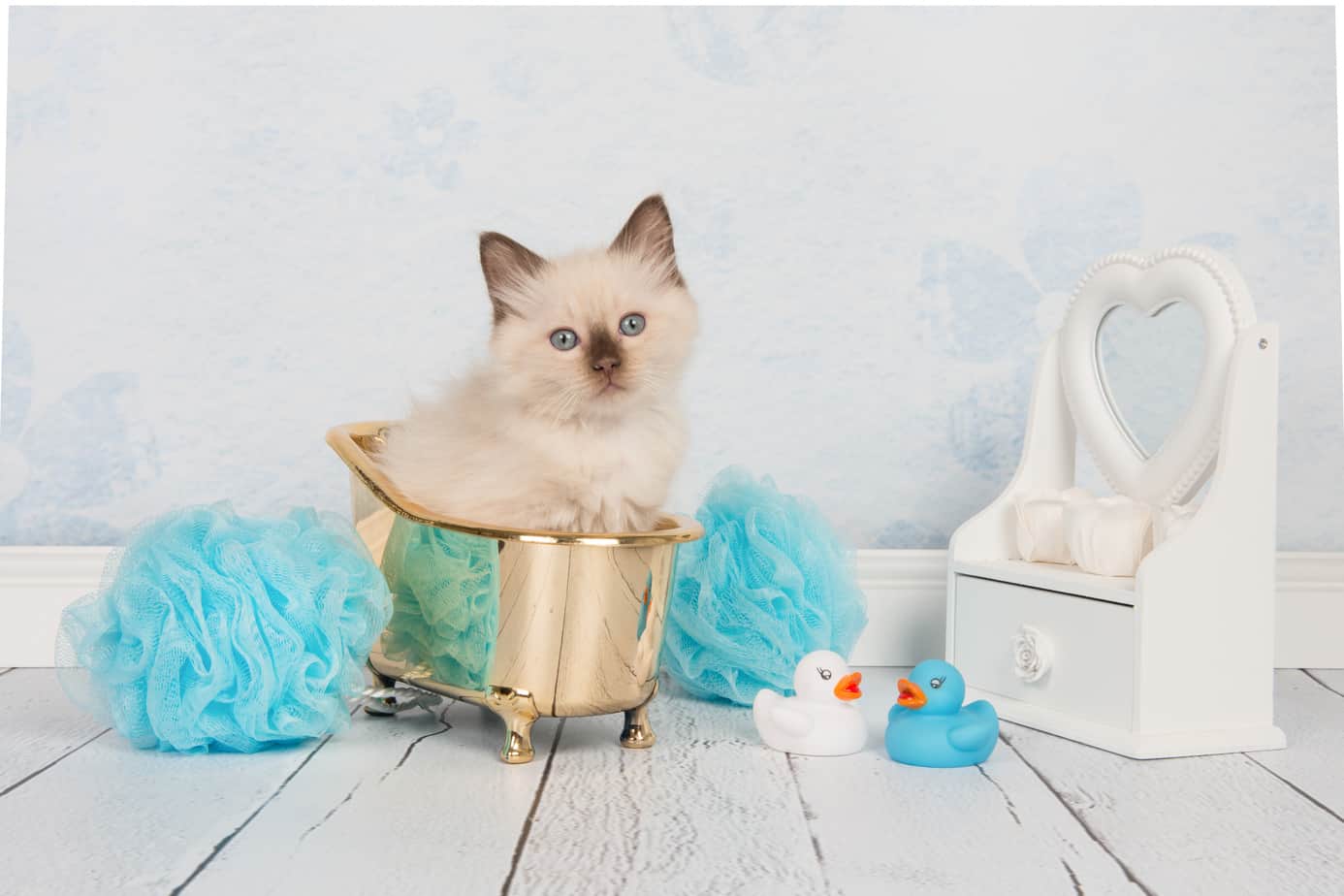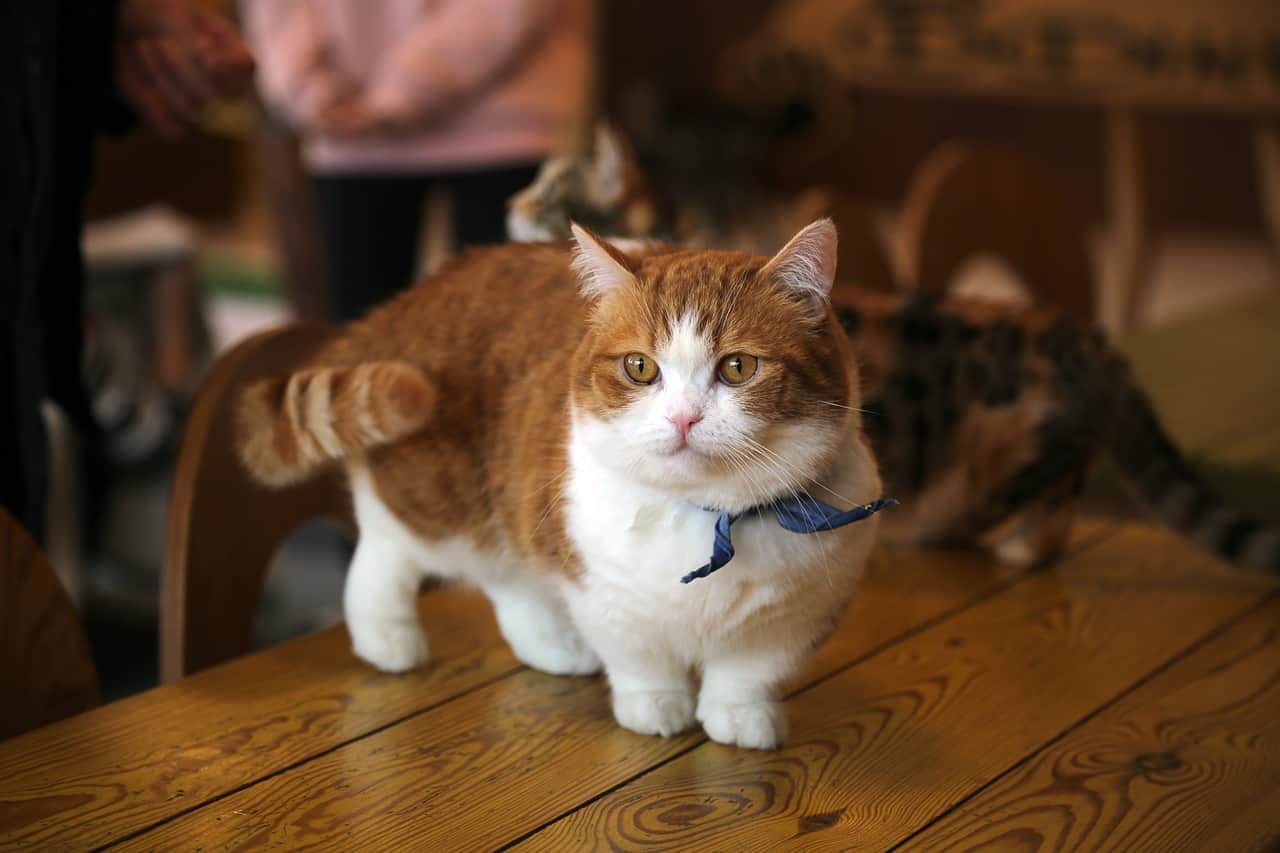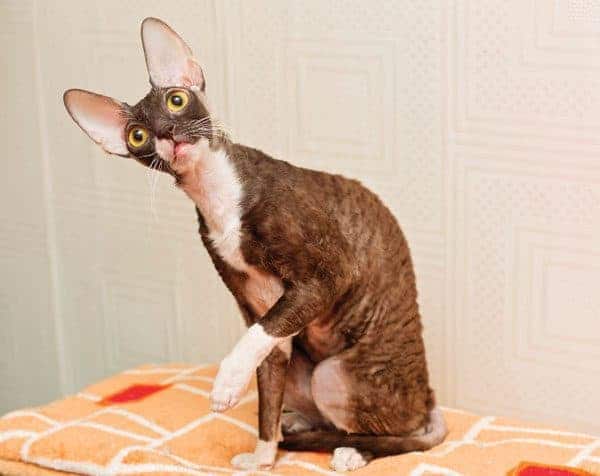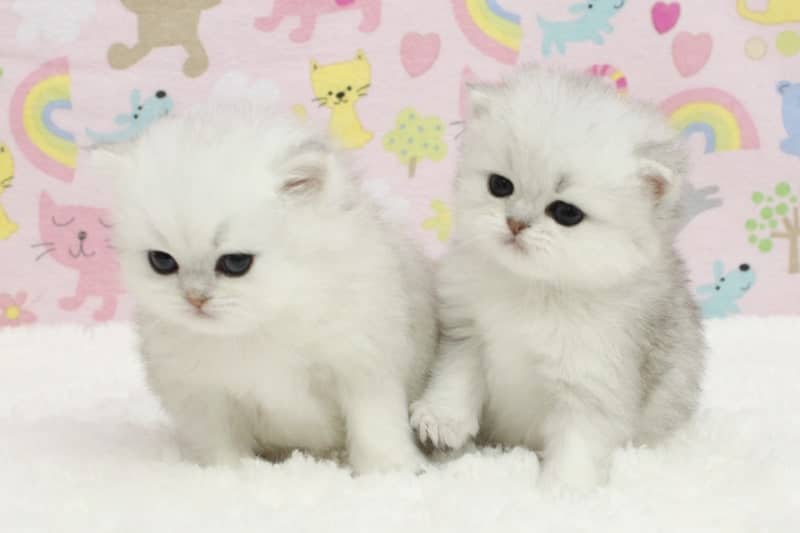Table of Contents

These days, even in the world of cats, trendy is small. This means that smaller breeds are in high demand. Breeds such as the Devon Rex, Cornish Rex, American Curl, and Munchkin are some of the smallest cat breeds in the world. While the Peterbald and the Sphynx are also on that list, the Singapura and the Russian Toy Bobtail are the smallest on the list. Keep reading to learn more about these tiny, different cat breeds that stay small.
1. Russian Toy Bobtail

The Russian Toy Bobtail breed is a miniature breed that has existed for about ten years and is now considered the smallest of cats. As an adult, this cat will weigh between 3-5 pounds, which is approximately the weight of an average kitten. However, despite the fact that this cat is tiny, it’s actually quite lively, alert, and healthy.
This cat has a very cute tail that is short and is either curved (forming a mini-spiral) or straight (forming a brush). In addition, this cat is very playful and curious and due to its small size, you don’t really need a huge area for it to explore. However, they are very social, so you’ll need to be prepared to offer tons of affection and love. This breed is in high demand- most breeders have a waiting list that is several years out.
2. Singapura

Before the Russian Toy Bobtail came along, the Singapura was considered to be the smallest of the small breed cats. This cat is a natural breed, not man-made. At adult size, this cat will weigh between 4-8 pounds and comes from South East Asia. It gets its name from the Malaysian word for Singapore. This cat is very attractive and is known for its very large ears and yellow, green, or hazel eyes.
When you first see a Singapura, you may think it’s a new color of Abyssinian. However, when you look closer, you’ll see that the only similarity is the large ears. This breed of cat is very curious, extroverted, and playful and will insist on being close to you at all times. This is a very intelligent, nondestructive breed.
3. Munchkin

The Munchkin is a fairly new breed of cat that gets its name from its short legs, which are the result of a genetic mutation. This breed was introduced to the public in 1991 and though skeptics said that there would be health problems with this breed, TICA accepted the Munchkin into its New Breed Development Program. However, there are still many breeders out there that do not accept this breed because they believe that a genetic mutation is not normal and could pose some serious disadvantages to the cat.
Just for fun, below is an adorable video of a Munchkin Cat:
On the other hand, breeders and owners of Munchkins state that this breed is sound and perfect for a tiny home or an apartment and they are not as prone to health issues as one might expect them to be. This breed is very playful, sweet, and intelligent and loves to be social. Even though they do have exceptionally short legs, this does not seem to keep them from getting around where they need to. Their hind legs are a little longer, which gives them a small rise from their front to their rump. As an adult, this cat will weigh between 6-9 pounds.
4. Cornish Rex

This small domestic cat breed comes from Cornwall, Britain and lives for a long time. Most cat breeds have three layers of hair: outer/guard hairs, middle/awn, and undercoat/down. However, the Cornish Rex only has one layer: the down. Since they have such a fine coat, they should ideally be kept indoors in a warm and dry area. They’re extremely sensitive to lower temperatures. This type of cat is very playful and almost gallops when they run. This is the reason why you may have heard some people refer to them as the “Greyhound of the cat world.”
A Cornish Rex enjoys playing games such as fetch and even competing with other animals around them. They love to explore and are very curious and intelligent. They come in a variety of patterns and colors. The lifespan of a Cornish Rex is between 10-15 years.
5. Devon Rex

The Devon Rex comes from the same basic area that the Cornish Rex does and was introduced sometime in the 1960s. These cats are well-known for the shape and size of their ears and very sleek, slender bodies. They are very intelligent, which means they can learn more complicated tricks and there are some that say the Devon Rex can learn to recognize its owner’s name.
Due to their very unique appearance, these cats are often referred to as “alien” or “pixie” cats. This is another breed of cat that is very people-oriented. They have the ability to jump really high, so don’t be surprised if you find your cat on the shelf in your bedroom closet. They weigh between 5-10 pounds at adult size.
6. Miniature Persians

At one time, the miniature Persian was considered to be an oddity. However, these days, you’ll find several breeders in the UK, United States, and Canada. Though these small cute cats are smaller than their counterparts, they do have the same personality traits and physical features. This breed will vary in size based on their size at 8-19 months. The females typically weigh 6 to 8 pounds and the males will be a little larger, weighing 8 to 10 pounds.
Conclusion
One very important thing that you must keep in mind when it comes to breeding miniature cats is that this is not an exact science. The amount you pay for your miniature cat may not be worth the potential health problems he/she could have. Unless you are sure it’s a stable breed, you might want to consider something else.
In addition, you must understand that sometimes genetic anomalies occur which means that even though your cat was bred as a mini, he/she may become a typical size cat. There are distinct cat breeds that stay small that just don’t produce miniature offspring. This is because even genetic dwarfs carry the gene that results in a normal size cat.